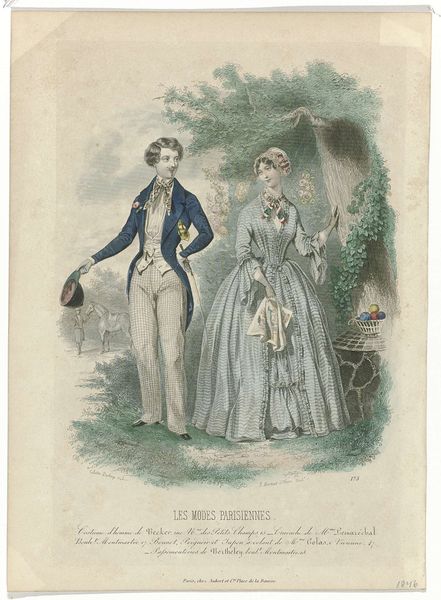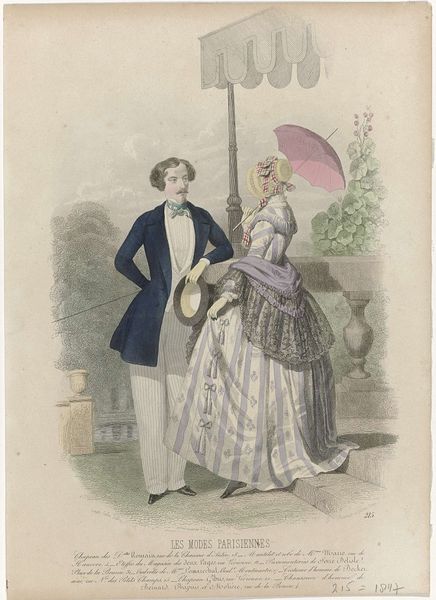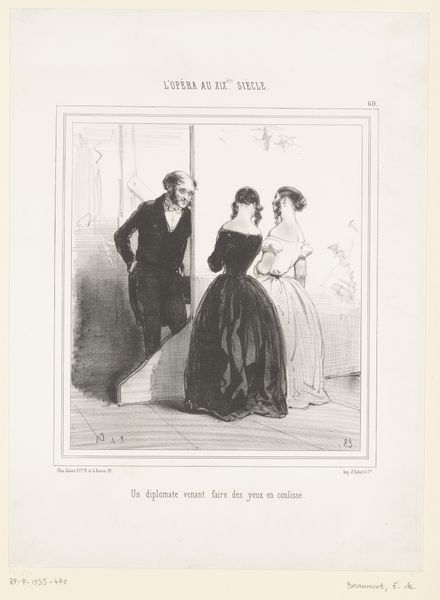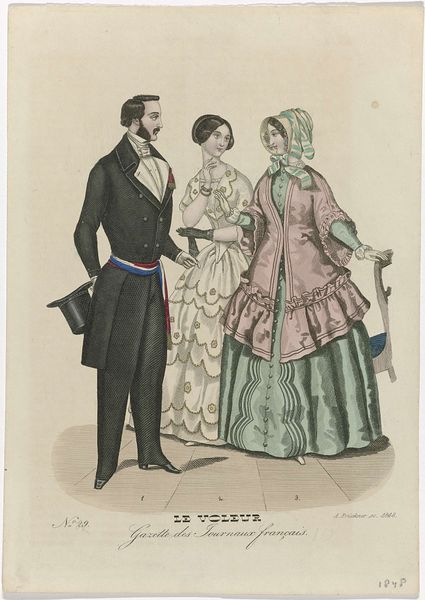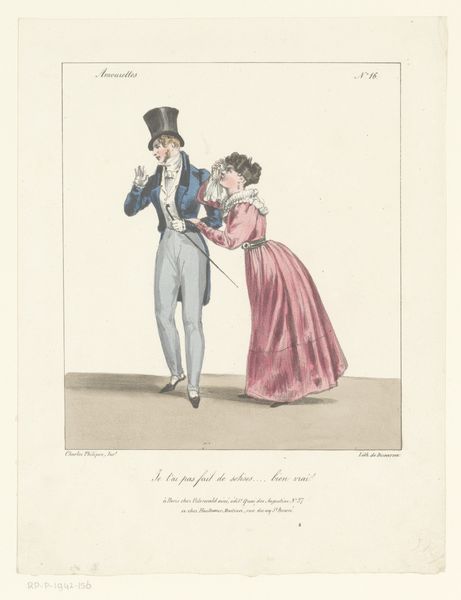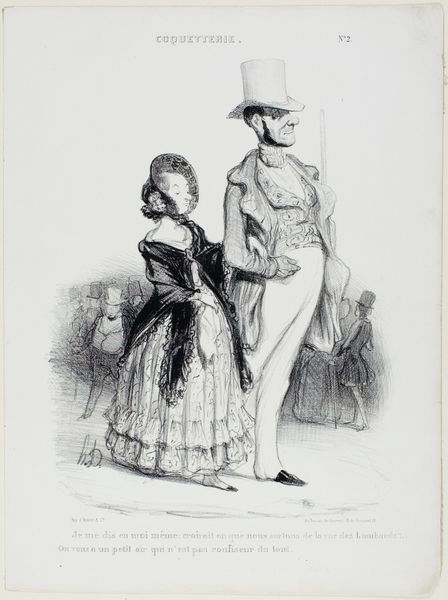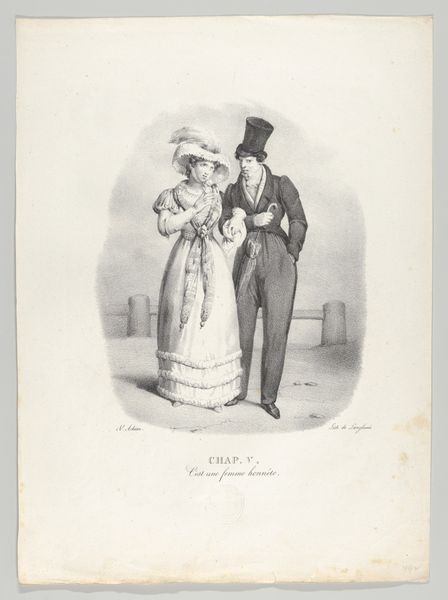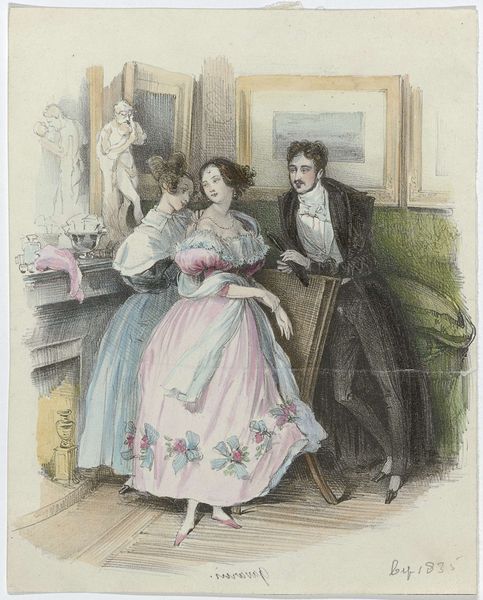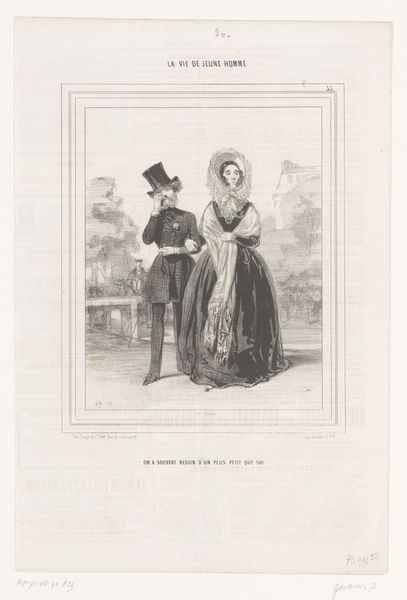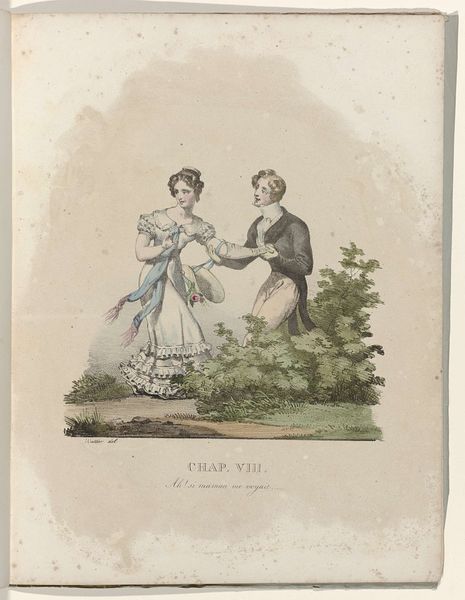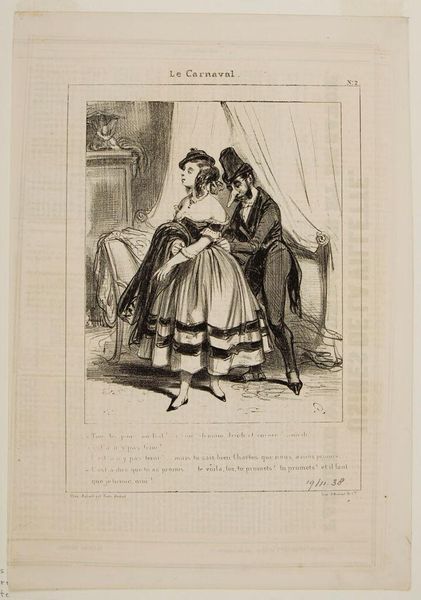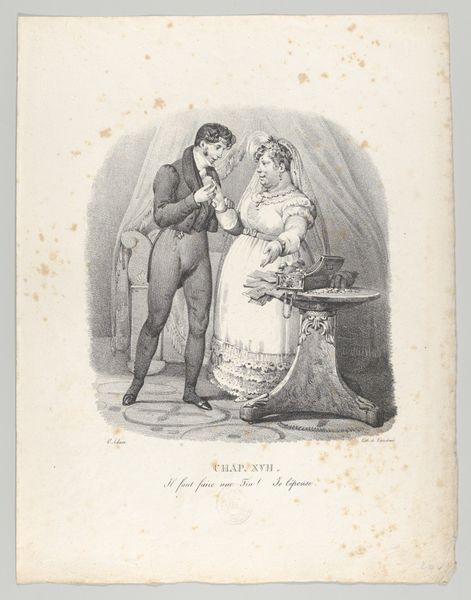
La Mode, 24 décembre 1836, Pl. 536 : Robe en velours de smyrne-Fichu (...) 1836
0:00
0:00
print, engraving
#
portrait
# print
#
old engraving style
#
romanticism
#
genre-painting
#
dress
#
engraving
Dimensions: height 225 mm, width 151 mm
Copyright: Rijks Museum: Open Domain
Curator: Oh, what a wistful scene! It feels almost like stepping into a Jane Austen novel. There's a quiet, almost melancholy air to this… elegance tinged with something more subdued. Editor: This is "La Mode, 24 decembre 1836," an engraving by Jean-Denis Nargeot, offering a glimpse into the Parisian fashion scene of the 1830s. It depicts a well-dressed couple. I agree with you that it seems… introspective. Curator: Introspective is the perfect word. Look at the woman; she's holding what appears to be a flute, but her gaze isn’t on it, it's distant. Is she about to play a tune, or has she just finished? There's an ambiguity that makes you wonder what's on her mind, lost in her thoughts maybe contemplating her next outfit? The dress... gorgeous in form, not vibrant. Editor: Absolutely, and fashion prints like these served a vital function in disseminating information about style and social standing. These engravings reinforced prevailing class structures and consumer desires in early 19th-century Paris. That dress, meticulously rendered, spoke volumes about the wearer’s status. It is, according to the legend in the bottom of the plate, a velvet gown from Smyrna. Curator: Exactly! These aren’t just pretty pictures. They're little social documents. Think about what it meant to choose these garments and accessories! Fashion was communication; status on display. I mean the chap on the left also makes you question everything too. Holding his top hat, looking like he may be heading home or to dinner. Are the clothes really important to these two souls though? Editor: Precisely. "La Mode" also exemplifies Romanticism’s interest in everyday life elevated to art. By focusing on genre-painting the print aimed at a broad audience and not the aristocratic few, fostering new cultural imaginaries and identities. Did art create fashion, or fashion create the artist? Or both!? Curator: Oh, I love that thought, blurring those lines! To think an image of fashion creates not just an aesthetic impression but ripples into history! You know it leaves you to wonder what our current obsession with documenting fashion does to our contemporary psyche, right? Are we as lost in it? Editor: That's it, the politics of imagery continues into today, "La Mode" acts as an entry point.
Comments
No comments
Be the first to comment and join the conversation on the ultimate creative platform.
